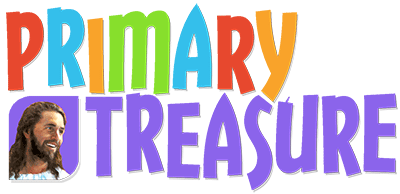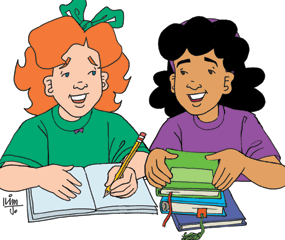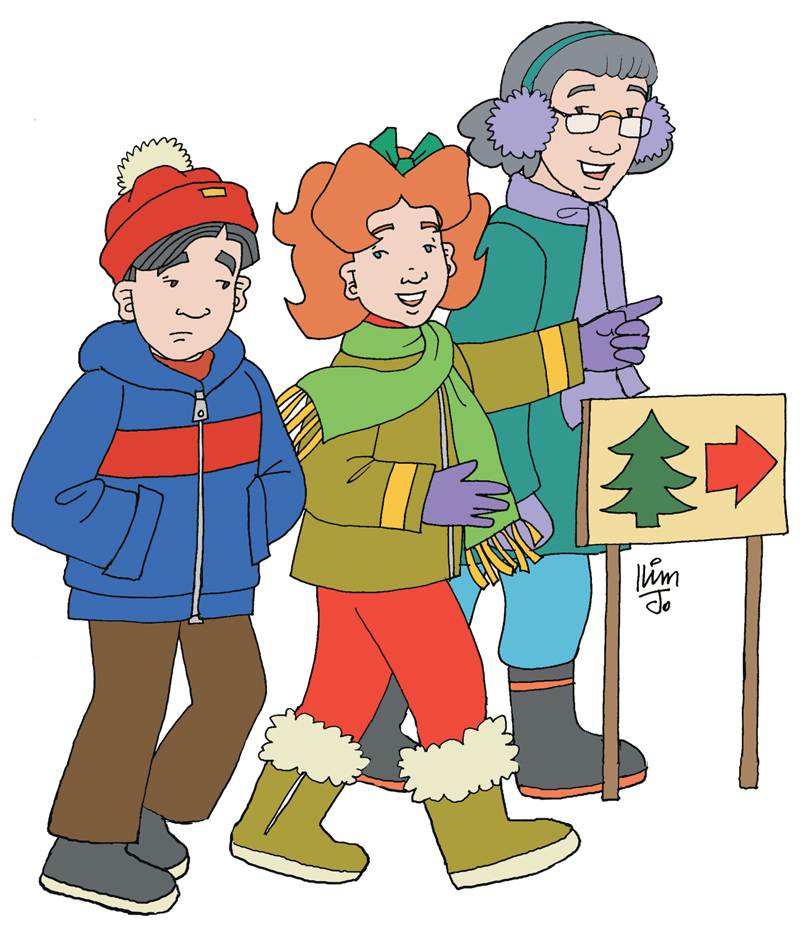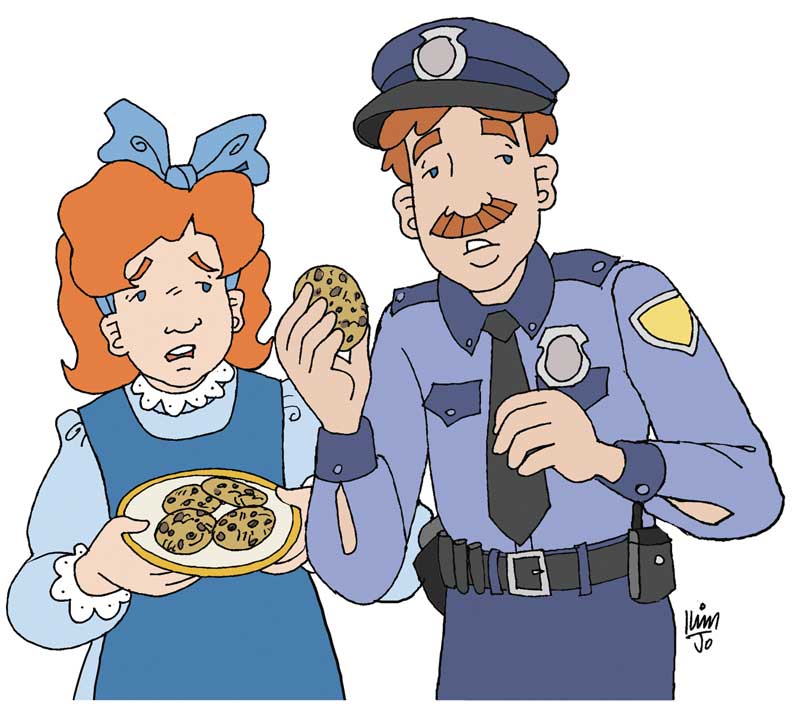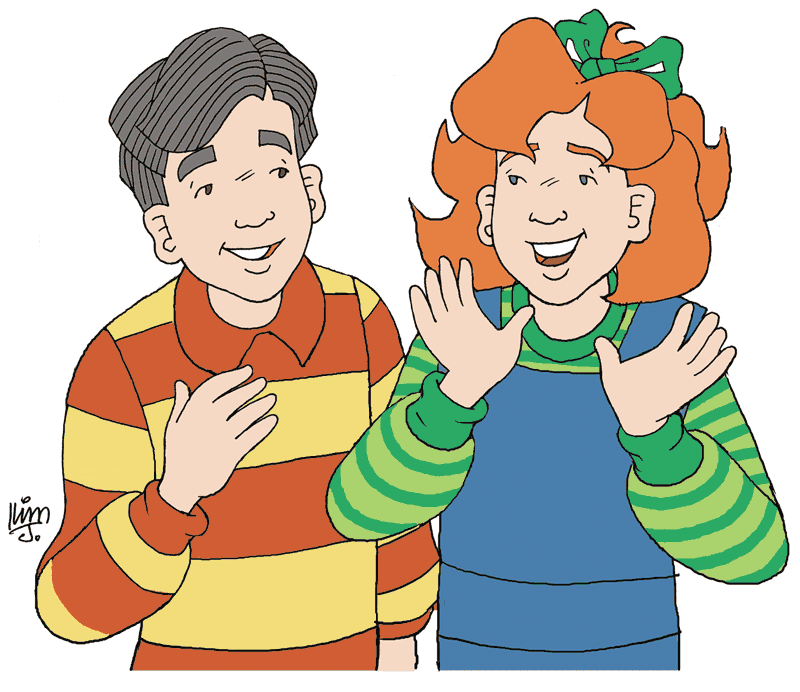
By Linda Porter Carlyle
Hannah Maria Estevez looked out the kitchen window at the pouring rain. “It’s funny!” she exclaimed. “We’re writing a report about water, and it’s raining!”
Mac giggled. “Water everywhere,” she agreed. She glanced up from the book she was reading. “It says here that 70 percent of the earth is covered with water. That’s almost three-fourths of the whole world covered with water!”
“My book says that water and air are what make it possible to live on our planet,” Hannah said. “Those are the first two things God created, aren’t they?” she asked.
“Don’t mess me up talking about air!” Mac sputtered, waving her hands. “We don’t have to worry about air! Somebody else is doing a report on air! We have to think about water right now!”
“Well, write down that part you said about water covering three-fourths of the world. That’s important,” Hannah said.
Mac bent over the paper in front of her and scratched away with her pencil.
Hannah returned to her book.
“Listen to this!” Hannah exclaimed. “I never knew this before!”
Mac put her pencil down.
“God doesn’t make new water all the time! The water we have now is the very same water He made in the beginning! It just keeps getting cleaned up and used over and over again. It says here,” Hannah looked down at her book again, “that the water we washed our car with this morning could be some of the very same water that Jesus and the disciples fished in on the Sea of Galilee!”
Mac stared at Hannah. Then she looked out the window at the rainy day. “That is a very odd thing to think about!” she said. She grinned. “Maybe when I take a bath, I’m taking a bath in some of the very same water Queen Esther took a bath in! Wow!”
“How’s the report coming along?” Mac’s mom asked as she came into the kitchen. “Almost done?”
“No,” Mac’s red curls bounced as she shook her head. “But we’re finding out some pretty interesting things! Do you know anything interesting about water?”
“Sure,” Mom replied. “I remember one or two things I learned in school! Water has something like a liquid skin. It’s called surface tension. That’s what makes it possible for those long-legged water bugs to skate across the top of water.”
Hannah jumped up and went to the window. She studied the raindrops clinging to the glass. “You’re right! It does look kind of like they have skin!” she said.
Mac joined her. She touched the cold glass with one finger. “I used to play that the raindrops were racing,” she said. “I’d always try to pick the one I thought would slide down to the bottom first. It’s hard to do!” she added.
“I remember an experiment we did too,” Mom went on. “We had a medicine dropper, and we tried to see how many drops of water we could fit onto a penny. The water doesn’t just run off the penny. It kind of curves up first because of the surface tension.”
“Oh! Can we try that?” Mac exclaimed. She bounced up and down. “That’s a great experiment! We could show the kids in class! I bet nobody else will have an experiment with their report! Do we have a medicine dropper? What is a medicine dropper anyway? I know we have a penny!”
Mom laughed. “I think we have a medicine dropper somewhere. I’ll look. Are you two hungry?”
“We can’t be hungry yet!” Mac said. “We’re not nearly through with our work.” She paused. “But I am. Hungry, I mean. Are you?” she asked Hannah.
Hannah nodded.
“I’ll make you some apple slices,” Mom said. “There’s an awful lot of water in an apple,” she said with a twinkle in her eye.
Mac and Hannah sat down and bent their heads over their books again.
“Listen to this!” Mac spoke up. “It says that 97 percent of the water in the world is in the oceans. But we can’t drink ocean water.”
“I don’t quite understand that percent stuff,” Hannah admitted.
“It means if you have 100 drops of water altogether, 97 of them are in the ocean,” Mac explained. “Anyway,” she went on, “the salt has to be removed before we can drink the water. And then the water has to be taken to where we are. In case we don’t happen to live by the ocean.”
“That’s true,” Hannah agreed. “How does that happen?”
“Well, the sun shines on the water in the ocean and warms it, and water vapor rises up,” Mac said. “I think water vapor must be like really, really tiny, tiny drops,” she guessed. “Then the water vapor becomes clouds, and the wind pushes the clouds over the land. And then the water falls out of the clouds. Like today!”
“It’s really complicated!” Hannah said, twirling her pencil between her fingers.
“It’s really complicated and really beautiful!” Mom said, setting a plate of crispy, red-skinned apple slices between them. “And God designed it. It certainly couldn’t have happened that way just by accident!
“And you know what else?” Mom went on. “Sometimes the water from the clouds comes as snow. And each and every little snowflake is different. I don’t think scientists have ever found two snowflakes that were identical. Just think of that! All the millions, and billions, and trillions, and zillions of snowflakes are all different! God didn’t have to do that! It’s just that He’s so creative!”
Mac took a deep breath. “I think God is awesome!” she exclaimed.
